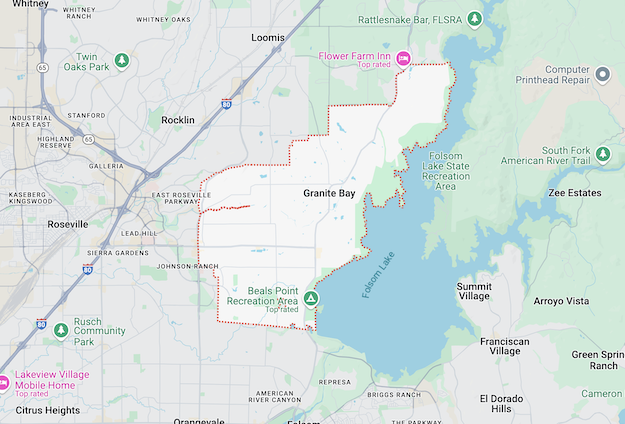Act Now - Limited Time Offer
$67 Pest Control

Jakob Beltran
Pest Control Technician
Jason Hansen
Pest Control Technician
Jackie Murphy
Sales Representative
Blow flies stand out due to their metallic colors, ranging from blue and green to black or copper. These larger-than-average flies are noisy and lay their eggs in rotting meat. Depending on the species, their larvae develop into adults in 7 to 15 days. They are typically found around waste, pet droppings, and spoiled food, making them a problem for households and businesses.
The Oriental latrine fly, a type of blow fly, has been a persistent issue in Southern California since 1989. They congregate near trash bins and shaded areas during the warmer months. Larvae near homes may migrate indoors to finish developing, creating a disturbance when they emerge as adult flies. Effective waste management and regular cleaning are key to preventing blow fly problems.


The little house fly (Fannia canicularis) is known for its erratic flight patterns, typically flying in circles and rarely landing on human food. This makes them less likely to spoil food compared to the common house fly.
These flies lay eggs in rotting plant material, compost piles, or animal waste, including from pets like poultry and rabbits. With a life cycle of about 24 days from egg to adulthood, they mainly create annoyance. However, their preference for decomposing materials limits their risk indoors.
The false stable fly, scientifically named Muscina stabulans, tends to be slightly larger and stockier than the average house fly. Its body is generally dark gray. Unlike true stable flies, it doesn’t bite, but it may enter homes to lay eggs on slightly spoiled food.
The larvae of these flies are often located in decomposing vegetable matter and animal excrement. The false stable fly’s life span is typically 14 days. While it isn’t a biting insect, its presence indoors can be frustrating, especially when eggs are involved. Understanding its habits is crucial for effective control.


The black garbage fly is a shiny, slender insect measuring around 1/5″” long. It thrives in garbage waste, making it common in rural areas with irregular trash collection. These flies aren’t usually a concern in larger cities, but in areas with inadequate waste management, they can multiply rapidly.
Their life cycle is short, lasting about ten days, allowing them to develop swiftly. Effective garbage management is crucial in controlling their spread.
Resembling house flies, stable flies are different in one significant way: their pointed, slender beak allows them to bite. They typically feed on livestock like horses and cattle but will bite humans, particularly when they seek shelter indoors during rainy weather.
Stable flies pose more than a mere nuisance; they can harm livestock and pets. These pests breed in damp, decaying organic materials like manure or urine-soaked straw. Keeping areas clean and free of waste is essential to minimizing stable fly numbers.


Flesh flies (Sarcophaga species) are larger than the common house fly and have a characteristic checkerboard pattern on their abdomen. Their bodies are usually gray, with black stripes on their thorax. Unlike most flies, flesh flies give birth to live maggots instead of laying eggs. These maggots are found in decaying meat, animal carcasses, and dog droppings. Flesh flies are often associated with dead animals and snails.
Their entire life cycle can be completed in just eight days. Flesh flies tend to linger near decaying organic material. If you see slow-moving flies with checkered abdomens, a flesh fly infestation may be present.
Our fly control process at Granite Bay Pest Control begins with a detailed inspection of your home or business. We look for potential fly breeding grounds, such as waste areas, standing water, and decaying organic material. We also identify common fly species like blow flies and drain flies.
Additionally, we inspect your plumbing system to eliminate any leaks or blockages that could contribute to the fly issue. Using specialized tools, we find larvae and adult flies even in hard-to-reach areas. This helps us tailor treatments to your specific needs, ensuring effective results.


Ensure that both indoor and outdoor spaces are adequately cleaned before our technician arrives, making it easier for us to identify the infestation. Our technician will conduct a thorough inspection, paying attention to any underlying issues, such as pipe leaks or drainage problems.
For drain flies, we use specialized products to eliminate the flies and their larvae within the drains. We also spray around food prep zones while avoiding direct contact with food surfaces. Traps are placed in strategic areas where flies tend to accumulate.
Granite Bay Pest Control’s monthly fly treatment service includes thorough inspections of your property to locate fly breeding grounds like drains and garbage areas. We target these problem zones to stop flies before they spread.
Our environmentally friendly solutions effectively eliminate species like drain flies, blow flies, and stable flies. With continuous monthly care, we help ensure that your property stays protected from fly problems year-round.


Limited time offer! Get $50 off your first pest control service.

Barrier Services
Granite Bay Office
© Granite Bay Pest Control 2024